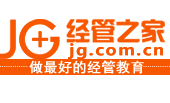

The average time these copper stocks spend in bonded warehouses have stretched on to nearly one year from just two months in the past.
Some of this growing stockpile may never leave the port as fancy footwork from China's traders keeps them several steps ahead of official attempts to stop copper being used as proxy cash to punt on other markets.
After a regulatory clampdown on a wheeze to use copper as collateral for risky property investments, and a decline in property market prices, traders turned to exotic instruments such as offshore yuan forwards and interest rate differentials to squeeze a little extra profit out of their metal.
These increasingly savvy financing deals mean that what used to be reliable metrics of regional demand, such as draws from copper stockpiles in London Metal Exchange warehouses and copper imports to China, have become muddied.
They also mean the spread between the Hong Kong and Chinese yuan [CNY= 6.3045  -0.0016 (-0.03%)
-0.0016 (-0.03%)  ] may be as important as China's industrial demand in determining imports.
] may be as important as China's industrial demand in determining imports.
"Today, a strategy purely based on trading LME stocks would still make money, but less money than, say, ten years ago. Financing deals have added another dimension to the fundamental picture," said metals strategist Michael Widmer of Bank of America-Merrill Lynch.
Some importers with years of experience are able to take advantage of different lending rates on offer.
"Traders have worked out some banks are smart at issuing LCs (Letters of Credit). Some issue them in yuan, some will issue them in U.S. dollars," said an analyst at a Western bank with China operations, who declined to be named because he is not authorized to talk about the bank's trading activities.
"You can take an LC from one bank, pledge it to another bank and borrow against it from another bank to take advantage of a whole range of different rates," he said. "All we know is that we are selling a tremendous amount of metal to China for reasons that don't appear to be logical."
Yuan Bandwagon
Previously, cash-strapped firms used metal imports to secure LCs, a much cheaper source of financing than official bank lending rates, in a simple swap to reap fatter rewards from other sectors.
They would sell the commodity or pledge the assets to another bank and use the money to invest in the red-hot real estate sector or to increase cash flow for their business.
The shenanigan did not escape the regulators, who launched a series of crackdowns last year, such as forcing banks to lock part of the original collateral held against letters of credit in reserve accounts, taking the heat out of these vanilla cash-for-commodity plays.
"Property developers are not very active in financing any more because the central bank has increased regulation. A lot of those doing the financing now are the trading firms, both international and local," said Judy Zhu, an analyst at Standard Chartered.
Given the slowdown in China's real estate sector and a toughening economic climate, some physical importers have morphed into currency speculators, looking to boost their profit margins by arbitraging between the onshore and offshore Chinese yuan markets.
The offshore market, or CNH (Chinese yuan traded in Hong Kong), is largely the result of China's experiment to promote its currency's use in international trade and has traditionally traded at a higher value in dollar terms than the mainland yuan.
The premium for the offshore market has climbed as high as 3 percent over the onshore rate last year due to limited supply and high demand for exposure to the Chinese currency, whose trade is limited outside the mainland.
Before a selloff in the offshore markets in September, trading firms were using copper to fund a carry trade, where they secured LCs in low-yielding dollars to fund plays in the spread between onshore and offshore yuan, layering an element of FX gains on top of commodity price gains.
They could also speculate on the currency by using yuan non-deliverable forwards, which are contracts betting on the yuan's direction but settled in U.S. dollars.
"For a while, traders using this model were able to lock in profits almost immediately because of the difference in the onshore and offshore spread," said a copper trader at a foreign bank who requested anonymity because he was not allowed to talk about the bank's business.
"The arb opened again in December so we should still see this sort of play in 2012, although the window will be less."
The yuan rose 4.5 percent in 2011 and should appreciate by around 2.3 percent this year, according to a Reuters poll.
"These plays on currency spreads are simply a way of using money to grow money and the goal is to increase our cash flow," said a senior executive at a large Chinese metals trading firm.
 扫码加好友,拉您进群
扫码加好友,拉您进群




 收藏
收藏

